1. Jerome, Arizona
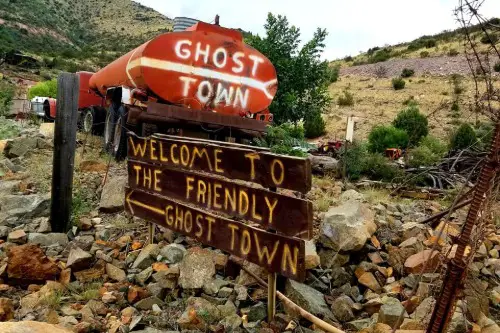
Jerome rose on the back of a copper bonanza and earned a reputation as one of the wildest towns in the West. At its peak, it had 15,000 residents and everything from opium dens to high-society parties. But when copper demand dropped after World War II, so did the population. By the 1950s, fewer than 100 people remained.
Instead of disappearing completely, Jerome reimagined itself. Artists and preservationists moved in, embracing its ghost town charm and strange beauty. Now it’s part tourist destination, part frozen relic, with crumbling buildings side-by-side with boutique shops. It’s a rare case of a boomtown that chose to evolve rather than vanish.
2. Bodie, California
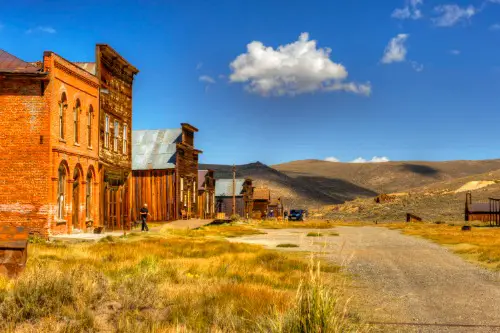
Gold fever brought thousands to Bodie in the late 1800s, turning it into a booming mining town almost overnight. At its peak, it had over 60 saloons and was notorious for its lawlessness and riches. But as the gold dried up, so did the population, and by the 1940s, it was mostly abandoned. The state later preserved it as a “ghost town in arrested decay.”
What’s left feels untouched by modern life—homes still hold furniture, stores still have stocked shelves, and dust lies thick over everything. It’s a hauntingly real peek into the rough-and-tumble past of the American West. Bodie now exists as a state historic park, but no one truly lives there. The silence says everything about what happens when the gold rush ends.
3. Thurmond, West Virginia
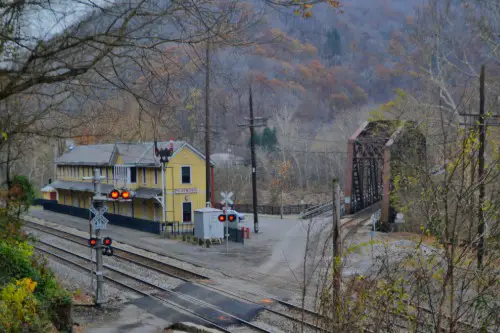
Thurmond once thrived thanks to the Chesapeake & Ohio Railway and the coal industry it served. In the early 1900s, this tiny town processed more freight than Cincinnati. But when diesel locomotives replaced steam engines and coal began to fade, so did Thurmond’s reason for existing. Now, just a handful of residents remain.
Much of the original town is maintained by the National Park Service. You can still see the bank, hotel, and rail depot, looking much like they did a century ago. The place whispers of train whistles and coal dust. Time seems to pause there, just long enough for you to hear echoes of the past.
4. Gilman, Colorado
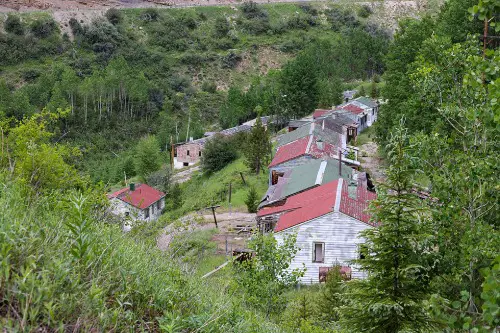
Perched high in the Rockies, Gilman was born from silver and zinc mining in the 1880s. For decades, miners worked the steep terrain while families built lives in the tidy little town. But when environmental concerns and declining ore prices caught up in the 1980s, the EPA declared it a Superfund site. Everyone was ordered out.
Now, Gilman sits abandoned, locked behind gates and surrounded by cliffs. The structures still stand—houses, a school, even a bowling alley—but everything is coated in rust and quiet. It’s a surreal mountaintop memory of Colorado’s mining boom. And it’s a sobering reminder of how quickly prosperity can turn toxic—literally.
5. Cairo, Illinois
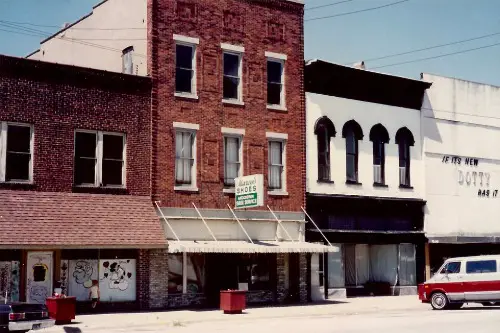
Cairo sits at the confluence of the Ohio and Mississippi Rivers, once a vital hub for river trade and shipping. Its prime location made it a booming steamboat and railroad town in the 19th century. But racial tensions, economic decline, and changing transportation routes slowly drained its life away. Businesses shuttered, and the downtown fell into eerie disrepair.
Entire blocks are now abandoned, windows boarded and nature creeping in. You can still see remnants of grandeur: ornate facades and vintage signage from better times. Cairo’s decline was less dramatic than some, but no less devastating. It’s a Southern town locked in limbo, haunted by history and what could have been.
6. Kennecott, Alaska
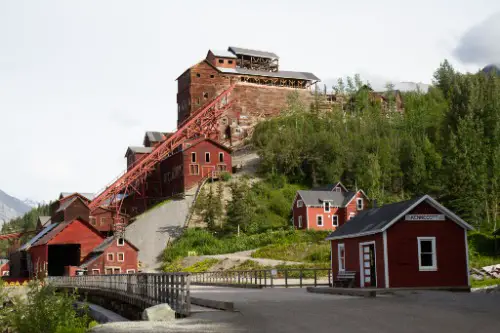
Built around the richest copper deposit ever discovered, Kennecott was a thriving company town from 1911 to 1938. It had state-of-the-art facilities for the time, including electricity and a hospital. But once the copper ran out, the town was suddenly no longer needed. Workers left overnight, leaving everything behind.
Today, many of the buildings still stand, frozen in their original state. The 14-story mill is especially striking, towering red against the Alaskan wilderness. It feels like the world stopped turning there in 1938. Now a National Historic Landmark, Kennecott tells the story of resource extraction at full tilt—and what’s left when the last train leaves.
7. Centralia, Pennsylvania
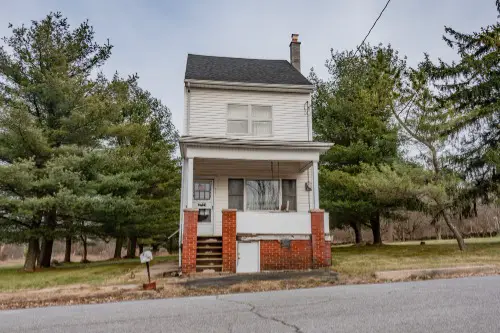
Centralia was once a bustling coal-mining town, fueled by the rich anthracite veins running beneath it. But everything changed in 1962 when a coal seam fire ignited underground—and never stopped burning. The toxic smoke and sinkholes eventually forced nearly every resident to evacuate. Today, just a few people remain, and the streets are eerily empty, dotted with graffiti-covered pavement where homes used to be.
It feels like a ghost town that nature is slowly reclaiming. The fire is still smoldering beneath the surface and could continue for another 250 years. Centralia became an unintended time capsule, its fate sealed by the very resource that built it. Walking through it is like stepping into a post-apocalyptic scene, frozen in both time and ash.
8. Rhyolite, Nevada
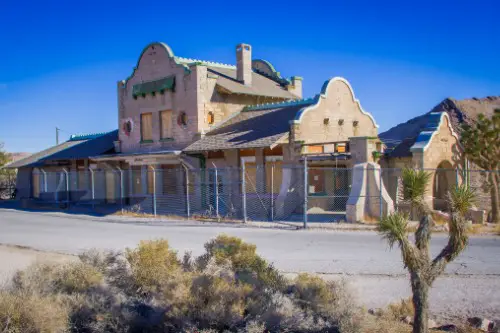
Rhyolite exploded into existence in the early 1900s during a gold rush in Nevada’s Bullfrog Hills. The town grew fast—electric lights, an opera house, and a stock exchange arrived seemingly overnight. But within a few years, the gold played out, and investors fled. By 1916, the electricity was shut off, and the town was empty.
What’s left looks like a movie set that time forgot. The skeleton of a three-story bank still stands, as does a train depot and a bottle house made from 50,000 glass bottles. It’s the desert’s eerie monument to ambition and collapse. Rhyolite shows just how fast fortunes can rise—and fall—in the American West.
9. Calico, California
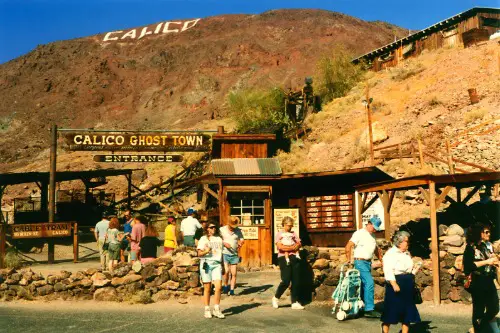
Founded in 1881 during a silver rush, Calico had over 500 mines and was wildly profitable for a time. But by the mid-1890s, silver prices tanked and the town emptied almost as quickly as it grew. It sat in near ruin until Walter Knott—yes, of Knott’s Berry Farm—bought and restored it in the 1950s. He turned it into a ghost town attraction, preserving its wild past.
Now, Calico is part museum, part Old West theme park. But underneath the kitsch, the original buildings still hold real history. It’s a theatrical preservation of a town that might’ve otherwise turned to dust. Calico blends fact and folklore in a way that’s both fun and strangely authentic.
10. Picher, Oklahoma
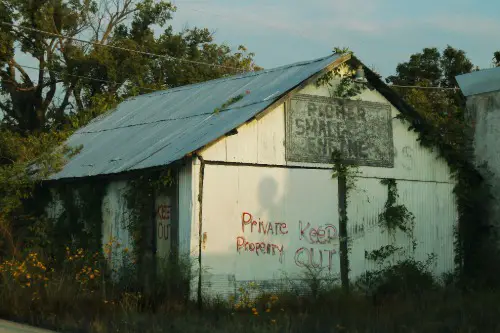
Picher was once the heart of America’s lead and zinc mining during both World Wars. But decades of unchecked mining led to catastrophic contamination—sinkholes, toxic water, and clouds of lead-laced dust. By 2006, the EPA labeled it one of the most toxic places in America. The government bought out residents and demolished most of the town.
Now, it’s essentially a toxic ghost town with piles of mine tailings—called “chat”—still looming over the flat plains. A few cracked roads and graffiti-covered buildings are all that remain. Picher’s fall is a chilling example of what happens when industry ignores environmental cost. It’s a lost town that people aren’t just leaving—they’re being forced to forget.
11. Glenrio, Texas/New Mexico
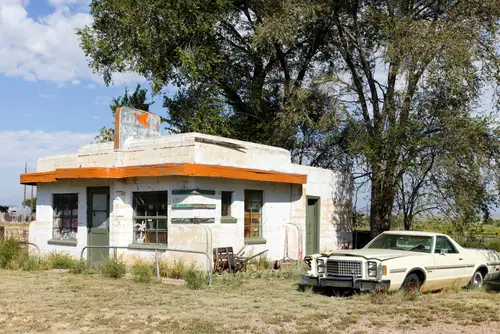
Glenrio straddled the Texas–New Mexico border and thrived as a Route 66 stop. It had diners, motels, and a gas station serving thousands of travelers a day. But when I-40 bypassed the town in the 1970s, the traffic vanished overnight. Businesses couldn’t survive without it, and Glenrio faded into stillness.
Today, its ruins sit scattered across the high desert—shells of old motels and signs pointing nowhere. The sense of abandonment is almost cinematic. It’s a symbol of how highways giveth and taketh away. Glenrio is a monument to the golden age of road trips—and the quiet that followed.
12. Eagle Mountain, California

Eagle Mountain was created in the 1940s as a company town for Kaiser Steel’s massive iron mine. It had homes, schools, and even its own shopping center. But by the 1980s, global steel competition and declining demand shuttered the mine. The town emptied out just as fast as it filled up.
The buildings still stand, sun-bleached and slowly crumbling in the desert heat. Security patrols keep out trespassers, but the sense of abandonment is total. Eagle Mountain once felt like the future—and now it barely exists. It’s a reminder that even modern company towns aren’t immune to bust cycles.
13. Scotia, California
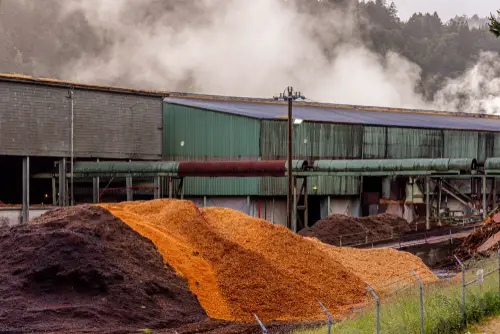
Scotia was one of the last true company towns in America, wholly owned by the Pacific Lumber Company. Built to serve redwood logging operations, it offered everything from housing to healthcare. But when logging restrictions and bankruptcy hit in the early 2000s, things unraveled quickly. The company sold off the town, and many residents moved on.
Today, Scotia still has residents, but parts of it feel paused in the 1990s. The mill stands quiet, and several buildings are empty or underused. It’s not fully abandoned, but its single-industry origin is clear in every street. Scotia’s in-between state makes it a compelling example of transition, not total decay.
14. Weed Heights, Nevada
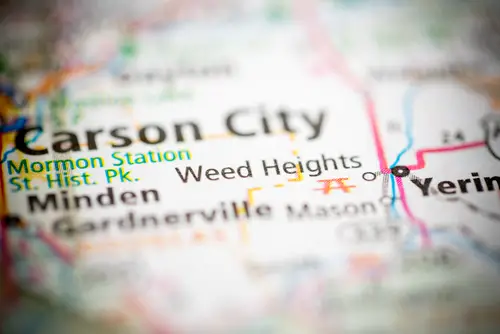
Weed Heights was built in the 1950s by the Anaconda Copper Company for workers at the nearby Yerington Mine. For a while, it was a model community—with tidy houses, a school, and a company store. But the mine closed in the 1970s, and the town’s purpose vanished with it. Most of its residents moved away, and maintenance stopped.
Now, it’s a semi-abandoned grid of homes and empty roads, a shadow of its former self. Some structures are still standing, but nature is creeping in fast. The copper may be gone, but the bones of the town remain. Weed Heights is a snapshot of industrial optimism—and how quickly it can rust.
15. Empire, Nevada
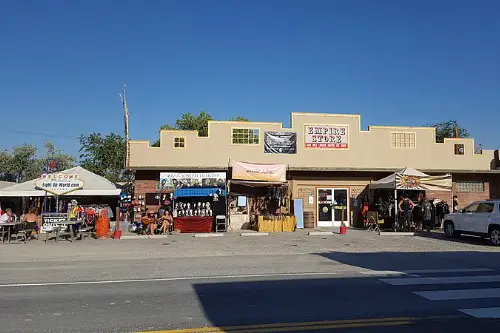
Empire was a gypsum mining town that once thrived in the middle of the Nevada desert. Its residents worked for U.S. Gypsum, which provided everything from housing to paychecks. But when the mine shut down in 2011, the entire town closed with it, leaving only a caretaker behind. For years, Empire existed as a modern ghost town—quiet, fenced, and fading.
Although mining has resumed under new ownership, Empire’s population never returned to its former levels. Most of the original infrastructure remains, but the sense of bustling community is long gone. It gained new notoriety after being featured in the film Nomadland, which captured its eerie stillness. Empire is a reminder that even a well-oiled company town can vanish almost overnight.
16. Diamond, Missouri
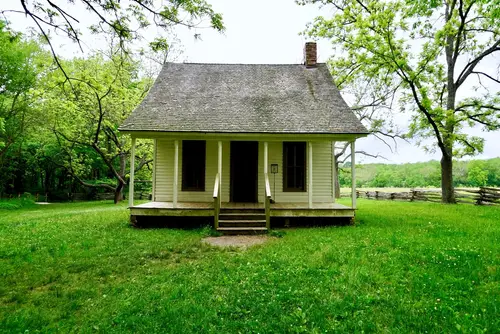
Diamond rose during the late 1800s thanks to the region’s lead and zinc mining boom. The town flourished as nearby mines drew workers and their families, sparking a brief golden age. But when metal prices collapsed, mines shut down and Diamond began to fade. People left, and so did the local economy.
Some buildings remain, eerily preserved among the hills of southwestern Missouri. Nature has overtaken portions of the old mining land, and the population remains sparse. Diamond now exists more as a relic than a thriving town. Its name still shines—but only on fading signs and aging maps.
17. Garnet, Montana
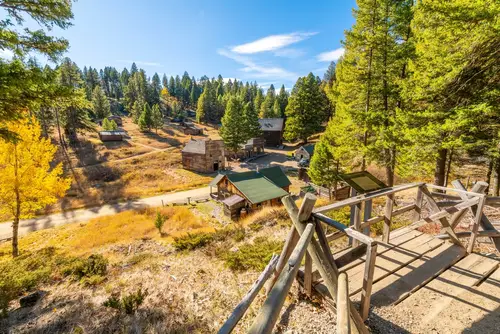
Garnet sprang to life in the 1890s, built around a gold mining boom deep in Montana’s forests. At its height, it had hotels, saloons, and even a school for miners’ children. But by 1905, gold production declined, and a fire in 1912 sealed Garnet’s fate. The town emptied out, leaving only wood-planked shadows of its past.
Today, Garnet stands quietly preserved in a state of “arrested decay.” No one lives there permanently, but tourists and history buffs visit year-round. The silence is broken only by wind and footsteps on creaky floorboards. Garnet’s isolation makes it one of the most haunting examples of a town built on gold and abandoned when it ran dry.
18. Coaldale, Nevada
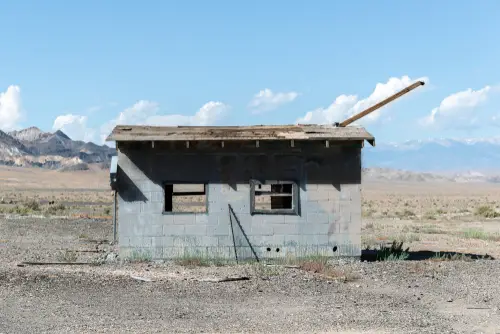
Coaldale was a coal mining town tucked into the remote expanse of central Nevada. It saw brief prosperity in the early 20th century but never built up beyond a modest community. By the 1990s, its last gas station shut down, and Coaldale faded into obscurity. Its collapse was quiet—but total.
What’s left is a scattering of skeletal buildings alongside desolate highways. Travelers still stumble upon its remnants while exploring U.S. Route 6. There’s no museum, no tour—just empty shells and the desert wind. Coaldale is the kind of place you don’t plan to visit, but never forget once you do.
19. Cisco, Utah
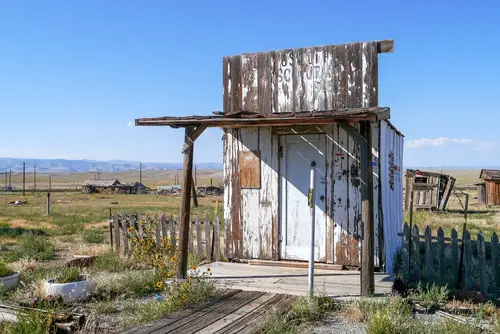
Cisco once supplied water for steam trains and later supported nearby oil and gas exploration. The town reached its peak in the 1950s, but when the railroad shut down, its reason for existence disappeared. Buildings were abandoned, and time took its toll. A few eccentric residents lingered, but the decline was irreversible.
Now, Cisco is more curiosity than community. It has become a haven for artists and wanderers, with scattered sculptures and painted structures marking the landscape. Part ruin, part canvas, Cisco thrives as a strange kind of living ghost town. It’s frozen—yet oddly expressive.
20. Elkhorn, Montana

Elkhorn was founded in the 1880s around silver mining and quickly grew into a bustling mountain town. At its peak, it boasted over 2,000 residents, plus schools and businesses built in grand Victorian style. But when the silver dried up, so did everything else. By the early 20th century, Elkhorn was nearly empty.
Today, two of its original buildings—the schoolhouse and Fraternity Hall—remain in striking condition. The rest of the town has fallen into soft decay amid pine trees and rolling hills. It’s preserved enough to feel familiar, yet remote enough to seem otherworldly. Elkhorn is a frozen glimpse of Victorian ambition in a rugged, forgotten landscape.
21. Argo, Colorado
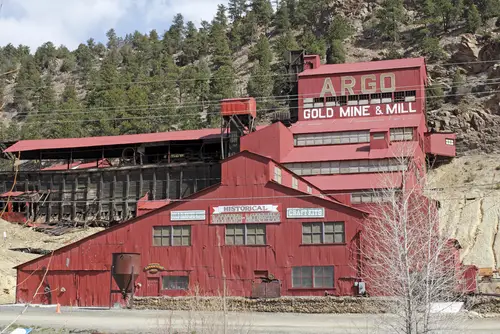
Argo was built around the massive Argo Tunnel, which drained water and transported ore from the gold mines of Idaho Springs. The tunnel revolutionized mining, and the nearby town sprang up to support the operation. But when the tunnel shut down in the 1940s, the workforce vanished, and Argo with it. The lights went out, and few came back.
Today, parts of the tunnel and mill have been restored, but the town itself remains suspended in time. Crumbling homes and mining debris litter the hillside near Clear Creek. History tourists walk trails where miners once hurried to work. Argo is a place where the infrastructure of ambition still lingers—without the people to drive it.
22. Vanadium, New Mexico
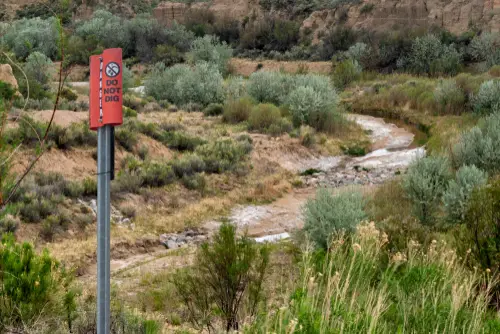
Vanadium was a short-lived town built during the early 20th century to extract the rare metal it was named after. Mines and mills sprang up, and the community buzzed with industrial hope. But vanadium demand dropped quickly, and the operation became unprofitable. Just a few years later, the town was gone.
The remains of Vanadium are scant—just concrete foundations and rusted machinery left behind. It’s one of New Mexico’s more obscure mining towns, often overlooked even by ghost town hunters. But its brief history speaks to how quickly economic tides can shift. Vanadium’s name endures only in scrap heaps and forgotten maps.
This post 22 U.S. Towns That Were Built for One Industry—And Froze in Time When It Left was first published on American Charm.


